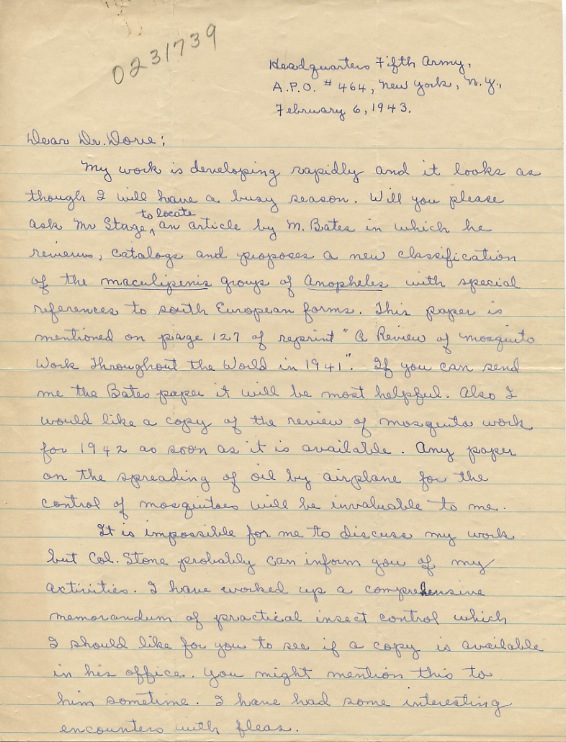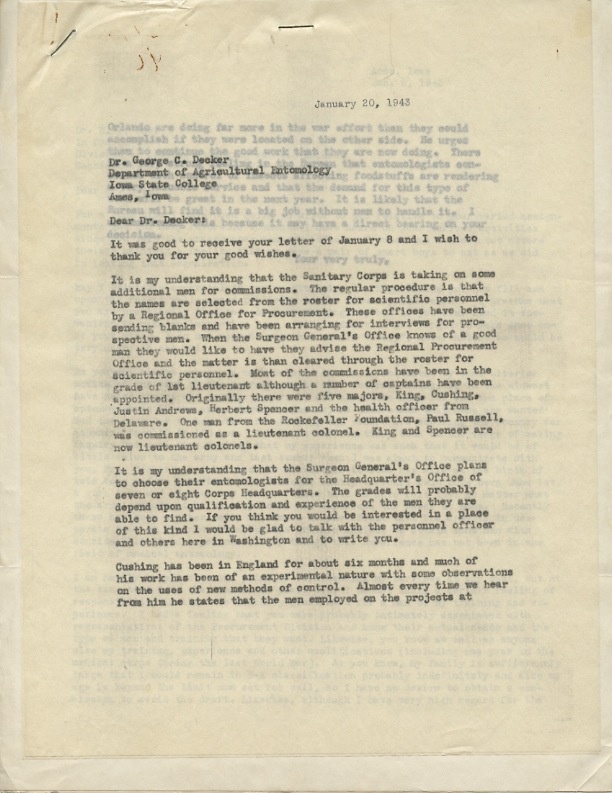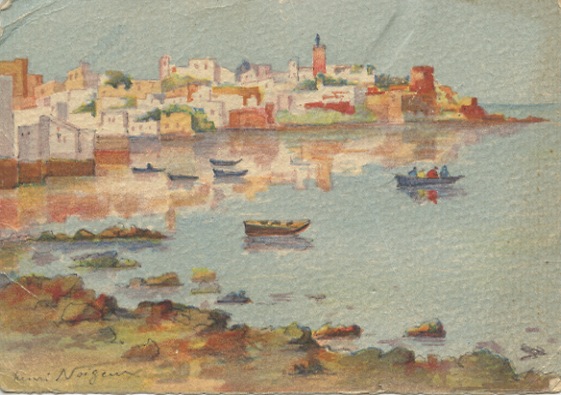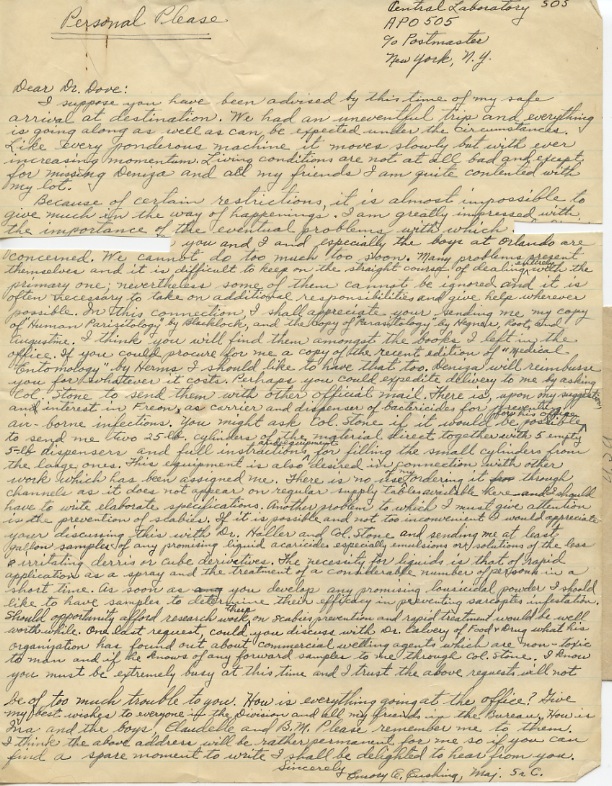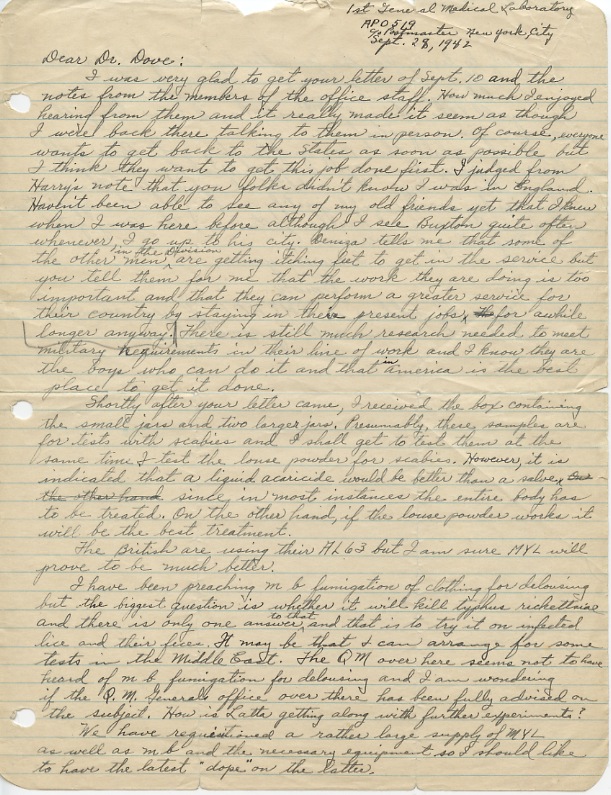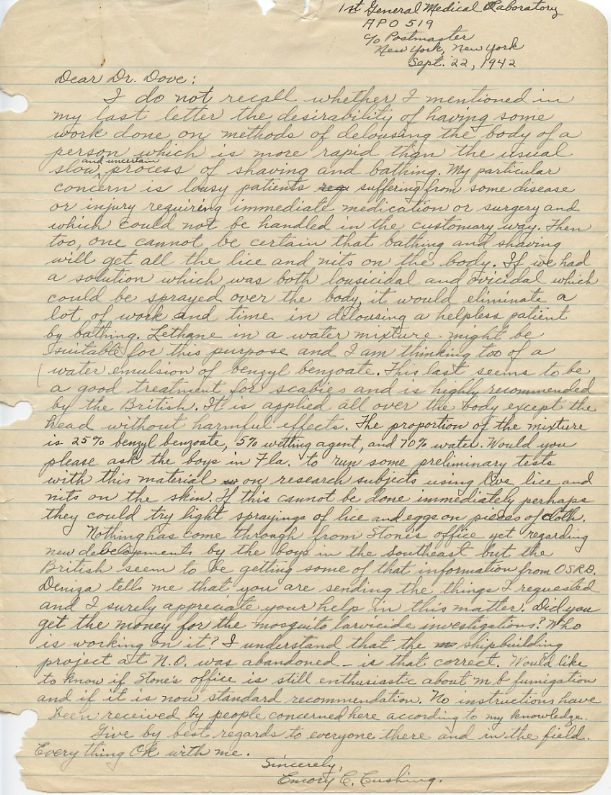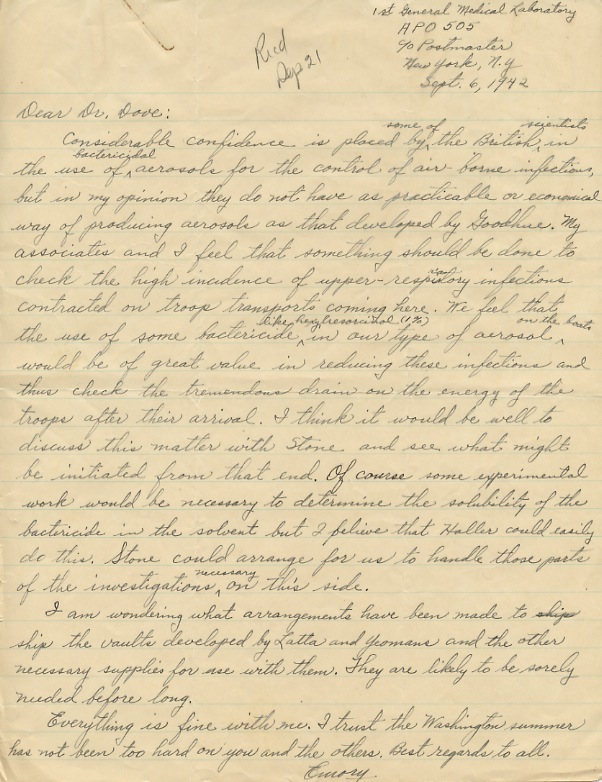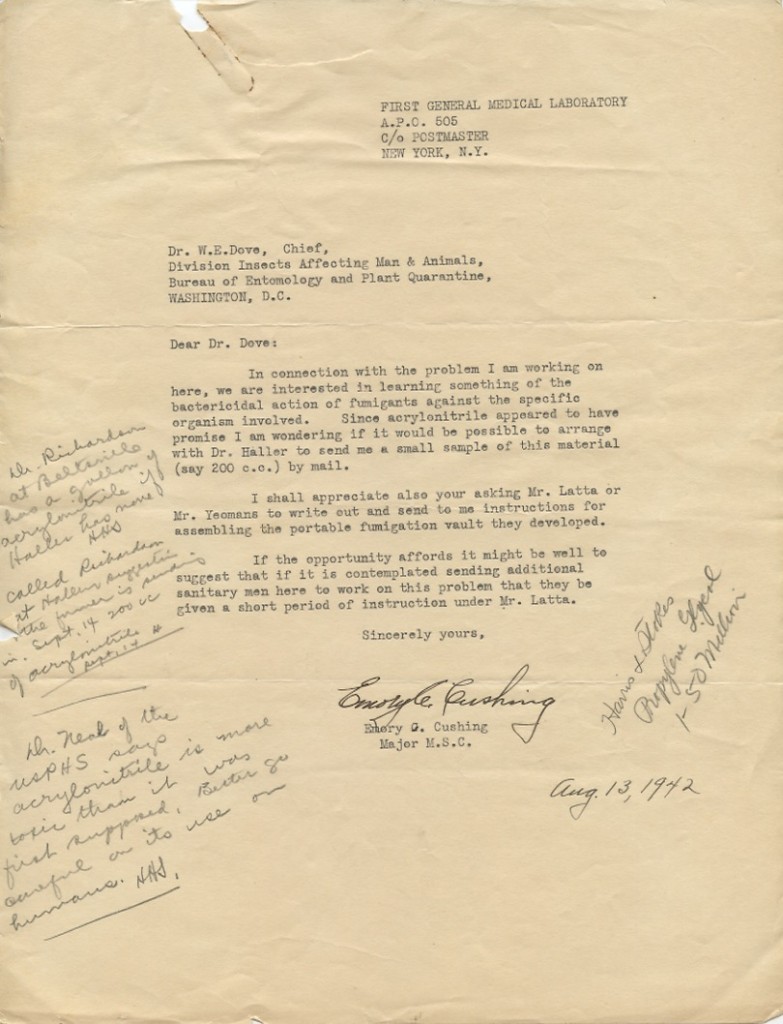Headquarters Fifth Army,
A.P.O. #464, New York, NY,
February 6, 1943.
Dear Dr. Dove:
My work is developing rapidly and it looks as though I will have a busy season. Will you please ask Mr. Stage to locate an article by M. Bates in which he reviews, catalogs and proposes a new classification of the maculipenis group of Anopheles with special references to South European farms. This paper is mentioned on page 127 of reprint “A Review of Mosquito Work Throughout the World in 1941.” If you can send me the Bates paper it will be most helpful. Also I would like a copy of the review of mosquito work for 1942 as soon as it is available. Any paper on the spreading of oil by airplane for the control of mosquitoes will be invaluable to me.
It is impossible for me to discuss my work but Col. Stone probably can inform you of my activities. I have worked up a comprehensive memorandum of practical insect control which I should like for you to see if a copy is available in his office. You might mention this to him sometime. I have had some interesting encounters with fleas.
I have been well since being here and my only complaint as to climate is the quick changes in temperature experienced here. North Africa is, to say the least, exciting. You will note from the above address that I have a new assignment. I am more than pleased with my work and although the responsibilities are great I feel fully equal to the tasks assigned me. This is a paradise for anyone concerned with insects and parasites affecting man.
Believe me when I say I have learned how to handle that bed roll. My sleeping bag turned out well and is plenty warm. I will not expand on the virtues and vices of G.I. soap, canned beef and other Army stand-bys as you know all of this through experience.
My best regards to Mrs. Dove and the boys and to my friends in the office. I have used and reused the glass vials your secretary gave me, they are the only ones of their kind in Africa.
Sincerely,
R.A. Roberts, Capt. Sc.C.
P.S. We have received none of the #612* yet. All of our orders are being filled with Indalone “Scat,” when will #612 hit production and can some of our orders be changed to that?
* Probably Rutgers 612, an insect repellent that predates and is apparently less effective than the now-ubiquitous DEET.

